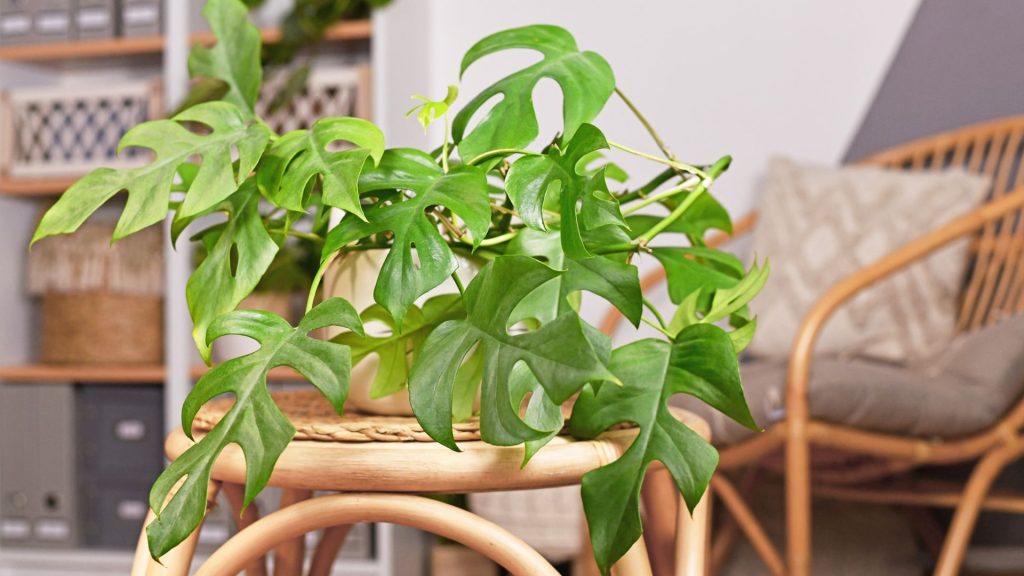Rhaphidophora tetrasperma is a relative of monstera – much less common in indoor floriculture, although it has been gaining popularity in recent years. This vine can help to create a spectacular green area in the room. Its leaves are not as large as those of the monstera, so the rhaphidophora would not take up half the room, and with the right approach, it can be placed on the wall. Let’s find out more about this cute plant.
Rhaphidophora tetrasperma Common Names
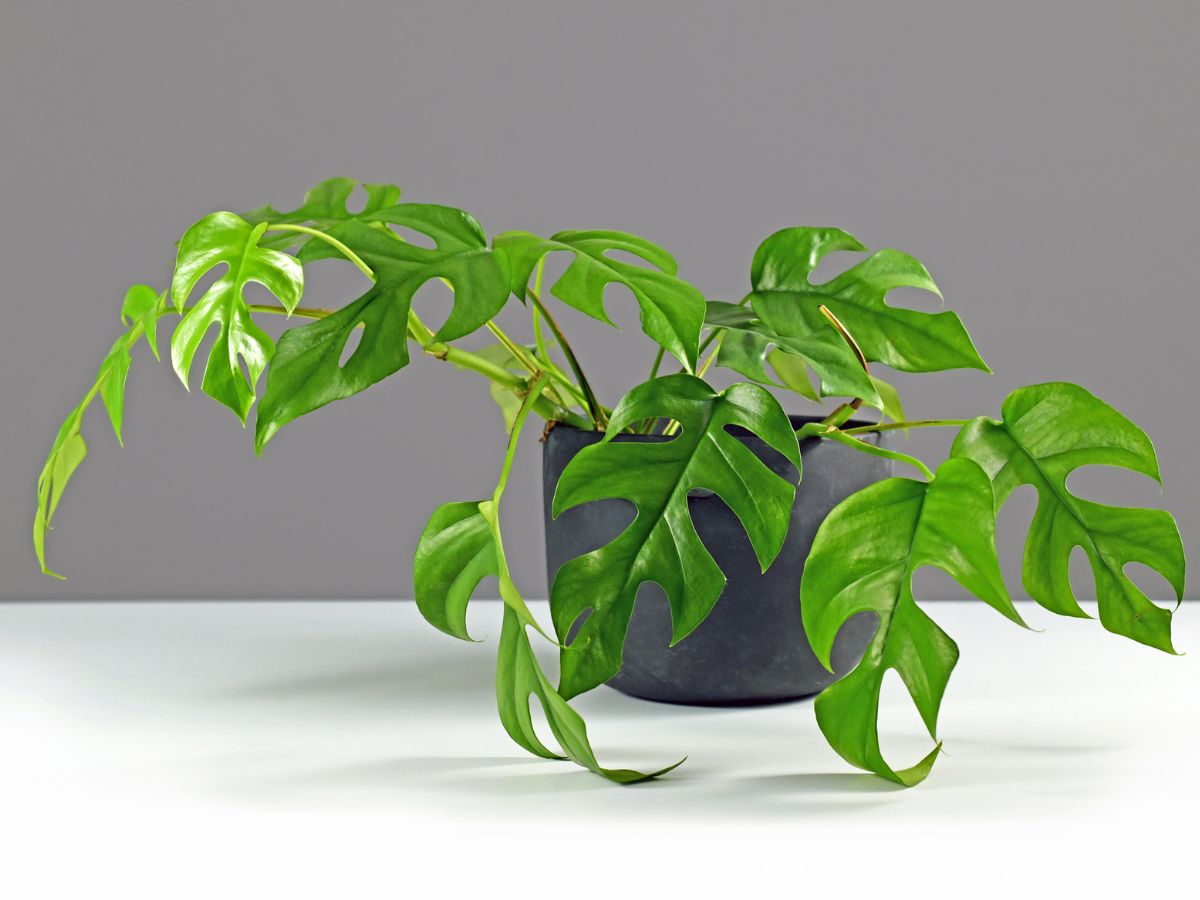
Rhaphidophora tetrasperma is the botanical name for a plant commonly referred to as Philodendron Ginnie or Mini Monstera. Although it resembles the larger Monstera deliciosa or bifurcated philodendron, this plant belongs to the Rhaphidophora genus. The genus includes hundreds of species – from miniature to huge, but most of them are not suitable for indoor breeding.
Rhaphidophora tetrasperma vs Monstera deliciosa
Despite the great similarity between these plants, these are completely different species that should not be confused. Although this plant is also called the “mini monstera”, remember that this plant is NOT a monstera.
But what is the difference between these two nearly identical plants? It is enough to pay attention to the following details:
- The leaves of Rhaphidophora tetrasperma are much smaller.
- Typically, Monstera deliciosa has very little or no holes, while Rhaphidophora tetrasperma has fenestrations.
- Monstera fenestrations are either holes or cracks with tips growing towards each other. The fenestrations of Rhaphidophora tetrasperma are generally more open.
- They live in two completely different parts of the world (Malaysia and Thailand vs Central America and Southern Mexico).
Rhaphidophora tetrasperma is an evergreen liana-like plant that belongs to the lianas family. Malaysia, New Zealand, and Southern Mexico are considered the homeland. The leaves of rhaphidophora tetrasperma are predominantly large, heart-shaped or oval, pinnate, and dissected, up to 24 inches long and about 15-20 inches wide. The leaves are rich green, smooth and leathery. The petioles are smaller than the leaves, bending near the leaf plate. The inflorescence is a cob with a yellowish veil.
Rhaphidophora tetrasperma Size
Depending on local conditions, rhaphidophora tetrasperma in the wild can grow to a height of 12 feet. As a houseplant, it is usually grown on vines about 4-5 feet long.
Rhaphidophora tetrasperma Care
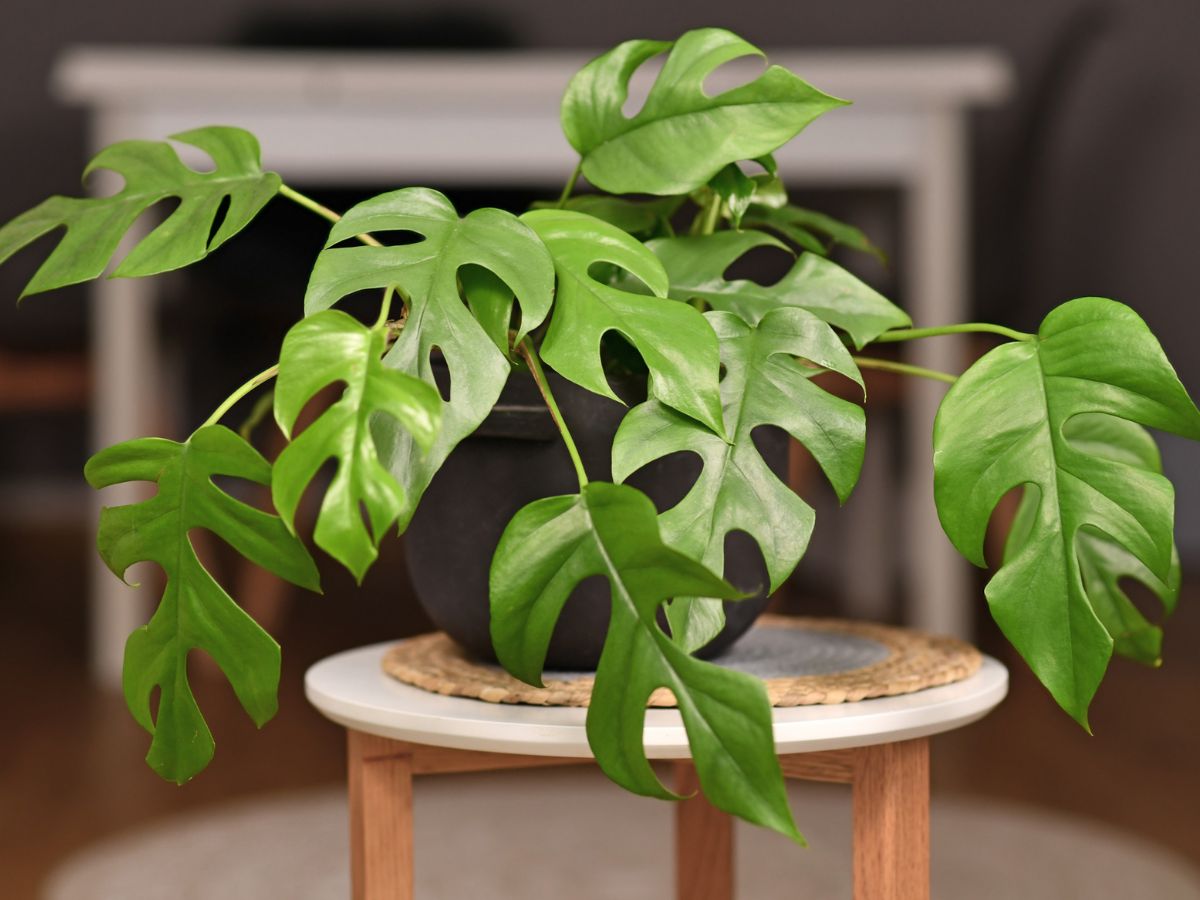
Light Requirements
The philodendron grows best in bright, indirect light. It can also tolerate direct sunlight, but only if they are not under them all day.
But Rhaphidophora tetrasperma is unable to survive in low light. Lack of light can even kill the plant. If you cannot provide it with enough natural light, then you can also use a grow lamp.
Temperature Regime
Like all tropical plants, Rhaphidophora is thermophilic. The ideal temperature for “mini-monstera” is 55-85 ° F. It can also tolerate cooler temperatures.
Philodendron Cold Hardiness
It grows in zones 9b-12, but zone 11 is best suited for this. For zones 9 and 10, it should be kept indoors when the temperature is lower than 55 ° F.
The Soil
The soil for the plant should be light, well-drained, and not dense. It should be periodically loosened, only this must be done very carefully so as not to damage the roots. The best soil for rhaphidophora is fertile peat-based soil mixed with pine bark, perlite, and sphagnum moss. The organics in this blend provide nutrients and may help retain moisture.
Watering
Although the plant loves moisture, over-watering harms it. It is worth watering the plant only when the topsoil is dry, and in winter the amount of water can be reduced. Try to avoid excessive moisture if you do not want the leaves of the rhaphidophora tetrasperma to lose their decorative value (black spots appear) and root rot occurs. In all periods, the soil should not be allowed to dry out.
Humidity
It is much more important to maintain high humidity in the care of rhaphidophora. It is best to keep the humidity around 60%. To do this, the plant should be sprayed daily with water, not allowing it to accumulate on the leaves, or install a humidifier next to it. Another way to maintain optimal humidity is to place rhaphidophora next to other tropical plants, together they would form an ideal microclimate for themselves. Also, do not forget to wipe the leaves from dust with a damp cloth. Take care to keep the plant away from drafts or radiators.
How to Fertilize
You should fertilize the plant every 4-5 months with a slow-release fertilizer for houseplants. You can also use liquid fertilizer once or twice a month. But try not to overdo it, as too much fertilizer can burn the roots.
Repotting
Since Rhaphidophora tetrasperma is actively growing, it needs to be transplanted annually, even if it is an adult plant, and a young one may need two transplants per year. If the roots are visible from the hole at the bottom of the pot, this is a sure sign that the plant is cramped and it is time to transplant it. The best time for this is early spring. How to repot a philodendron? To do this, carefully remove rhaphidophora from the pot and remove excess soil. If you notice rotting or dead areas of the roots, just carefully cut them off. Fill a new pot halfway with a suitable potting mix and move the plant there.
Rhaphidophora tetrasperma Pruning
The plant grows very quickly, so its growth must be controlled. Rhaphidophora tetrasperma cutting is analogous to philodendron pruning or monstera. Use only sterile shears, carefully cut the stems of the leaves where they meet the main stem.
Remember that rhaphidophora tetrasperma is a climbing plant and needs to be able to reach up, so take care of climbing support and other structures that it can cling to. They must be strong enough to support the full weight of the leaves as the vine grows.
Rhaphidophora tetrasperma Possible Problems
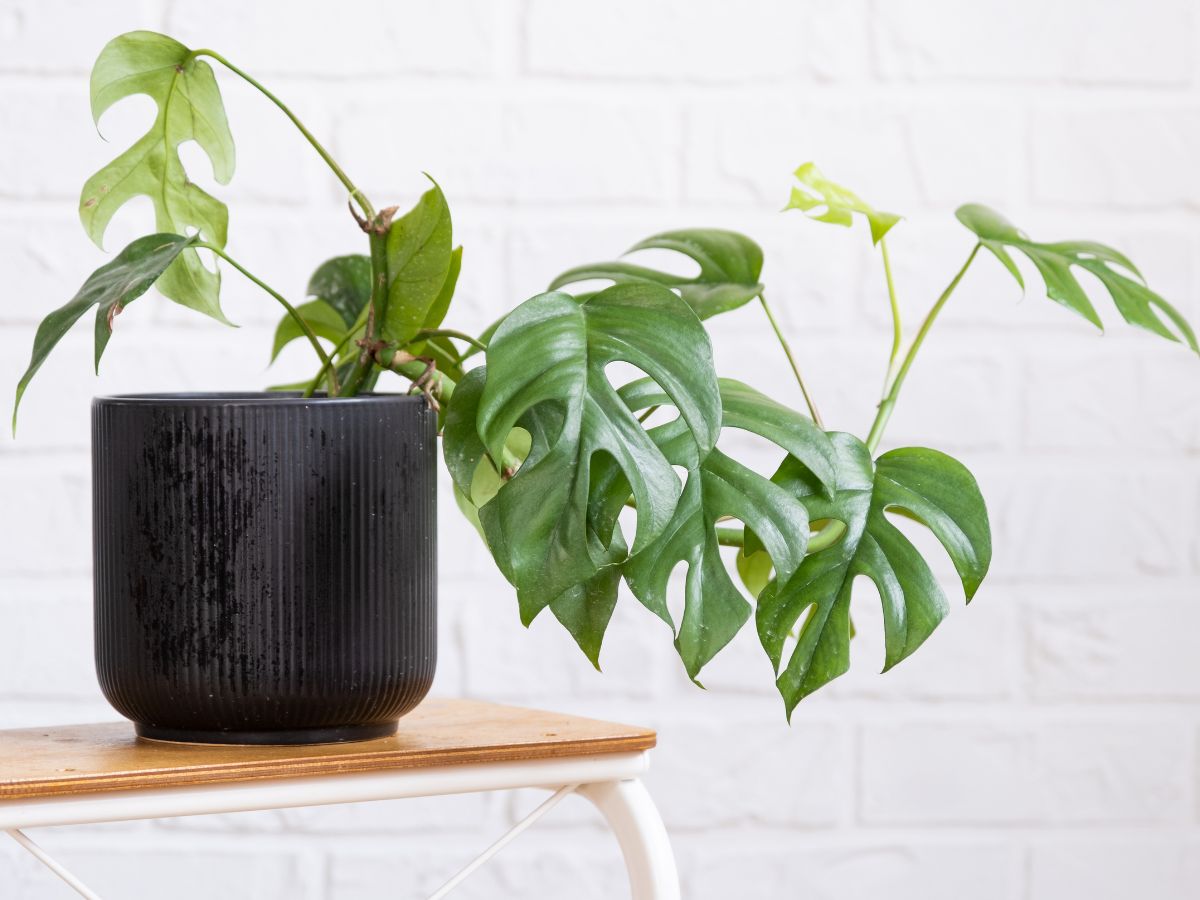
Spider Mites
If you notice in your “mini-monstera” small membranes under the leaves, then these could be the signs of a spider mite. To get rid of them, you can use a mixture of alcohol and water. To do this, dilute 1 cup of rubbing alcohol with 30 ounces of water. Sprinkle the mixture on both sides of the leaves and pat dry with a paper towel.
Root Rot
If you notice rhaphidophora tetrasperma leaves turning yellow, then this may be one of the signs of root rot. So, if the leaves are turning yellow and the soil is too wet, stop watering immediately until the soil is partially dry. But if that no longer helps, then the only way to save it from root rot is to transplant it into fresh soil.
Rhaphidophora tetrasperma Leaves Not Splitting
This is usually due to a lack of sunlight. Place your “mini-monstera” in a lighter spot, but keep it out of direct sunlight.
Propagation Rhaphidophora tetrasperma
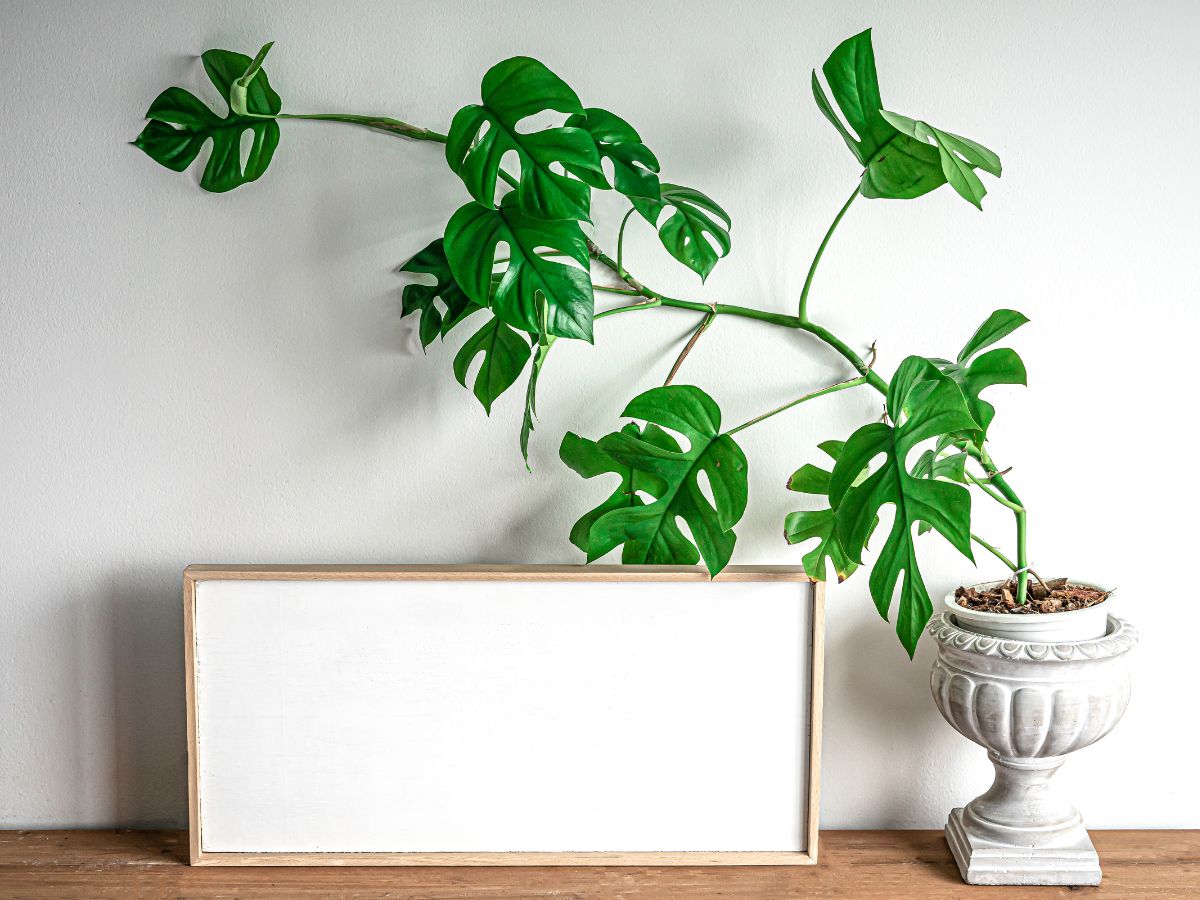
Propagation with Water
The most common way to propagate Rhaphidophora tetrasperma is by cuttings in water. To do this, use sharp scissors to carefully cut the stem, which has at least one leaf and node, about 1/4 inch below the node.
Place the stem in a glass of water so that at least one node is below the surface. Place the glass in a location where the plant can receive bright indirect light. Remember to change the water when it becomes cloudy. Once the roots are 2-3 inches long, you should place the cutting on the soil. It can take several weeks for rhaphidophora tetrasperma to root. Water the future plant well and take care of it as usual.
Propagation without Water
You can also propagate this plant without water. In general, the procedure is identical to the first method, only the cuttings must be planted immediately into the soil mixture so that at least one node is covered. Water well and place it in an area where the plant can receive bright indirect light. It may take about a month for the roots of the plant to take root. To be sure, you can gently twitch the plant to test its resistance.
In the case of rhaphidophora tetrasperma, its aerial roots can begin to take root, so we recommend that you do not cut them off from the cuttings.
Is Rhaphidophora tetrasperma Toxic?
It contains calcium oxalate that is toxic to cats and dogs. These substances can cause abdominal pain and lethargy, as well as a tingling sensation in the mouth. Therefore, like all other Araceae plants, keep rhaphidophora tetrasperma away from cats and dogs. Make sure they “hang” where pets can not grab them, eat and play with them.
Where to Buy Rhaphidophora?
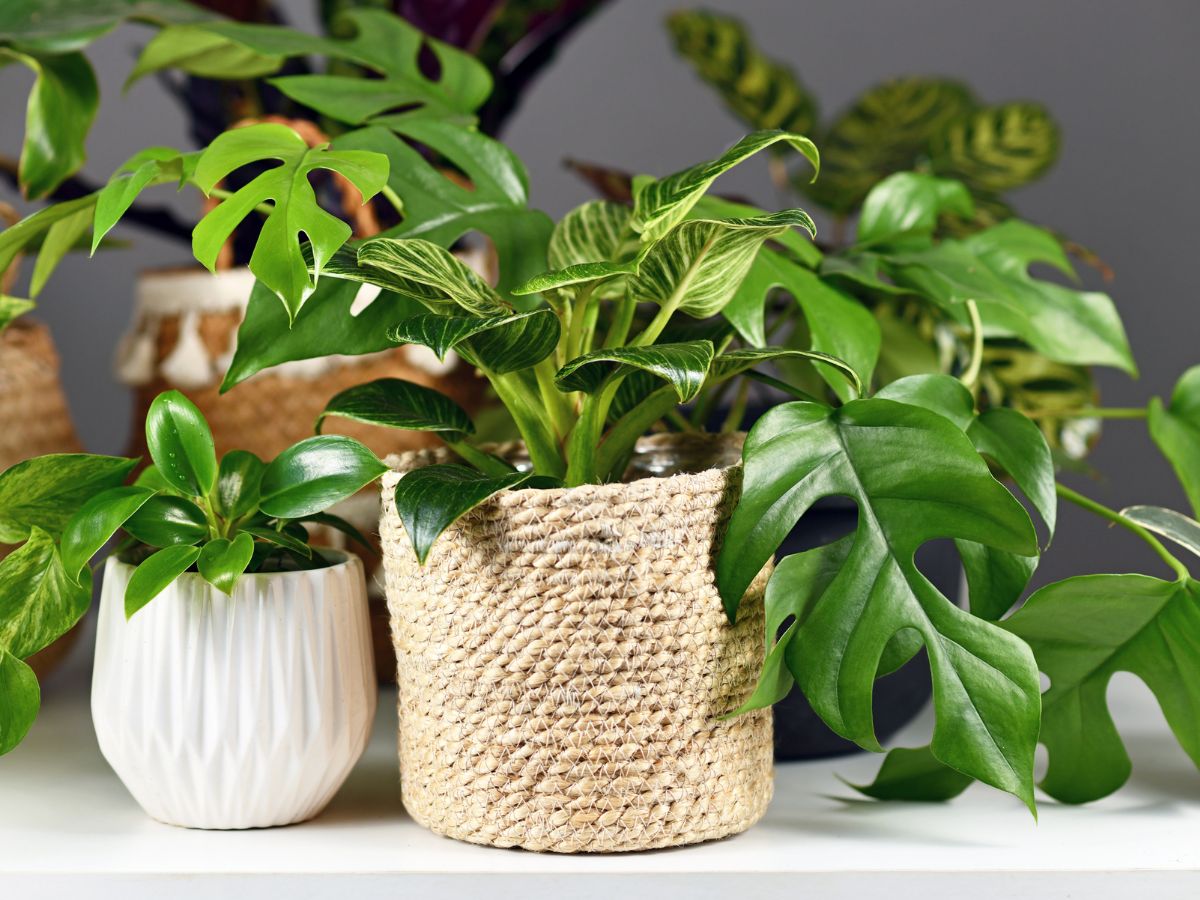
You can find a varied assortment of rhaphidophora tetrasperma in some stores or online for a wide variety of prices.
In general, rhaphidophora tetrasperma flowers are unpretentious, easy to grow, and maybe that’s why these delightful tropical lianas with beautiful dark green leaves of various sizes are among the most favorite indoor plants. But do not forget that in indoor conditions these plants can grow to considerable sizes, so it is best to grow them in spacious and cool rooms. Maintenance of this lovely plant includes frequent watering and a lot of indirect light. But also be aware of the toxicity of these green babies, and make sure they are out of the reach of children and pets.


